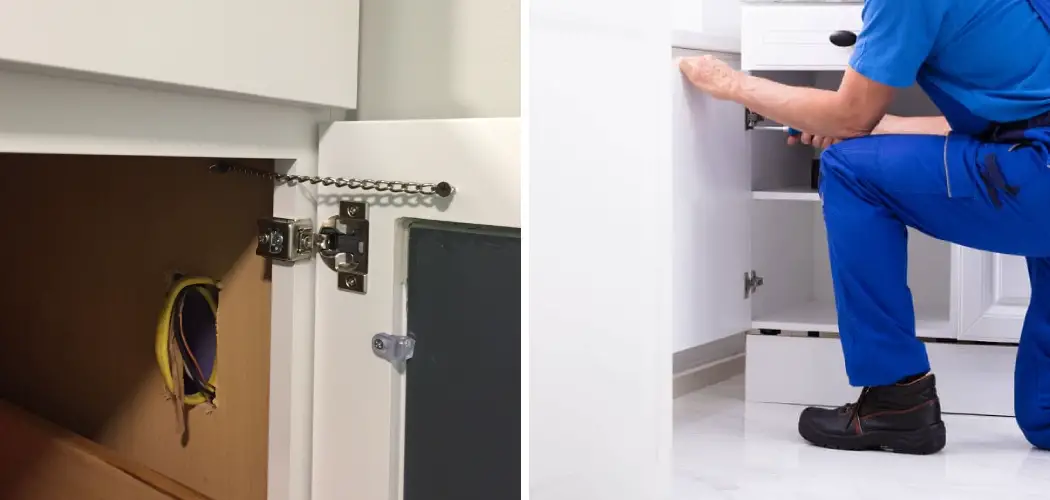Cabinet doors are an essential part of any kitchen or bathroom renovation; if they aren’t working correctly, they can be a huge nuisance. The last thing you want is your cabinet door to hit the wall when you open or close it, causing damage to either the door or the wall. Fortunately, there are some simple steps that you can take to prevent this from happening.
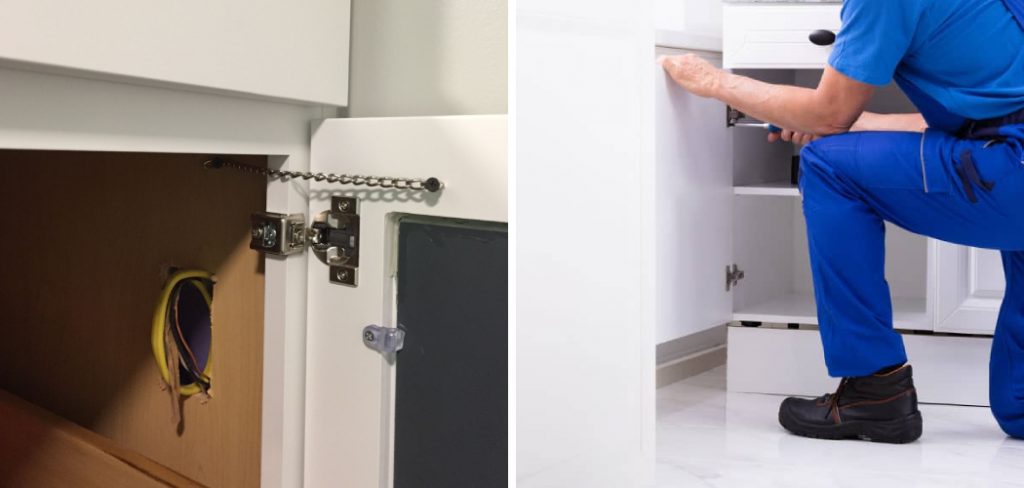
One of the main advantages of preventing cabinet doors from hitting walls is that it helps to preserve the walls over time. It can help to protect against cracks, dents, and other types of damage that can occur when a door swings open too far. Additionally, taking preventive measures such as this can save you time and money in the long run by reducing the need to repair or replace walls due to door damage. In this blog post, You will learn in detail how to prevent cabinet door from hitting wall.
Materials You Will Need
- Cabinet doors
- Cabinet hinges
- Screws
- Measuring tape or ruler
- Pencil
- Chisel
- Hammer
- Power drill with a variety of drill bit set
- Sandpaper (fine and medium grit)
- Wood glue
What Type of Hinges Are Best Suited for Preventing a Cabinet Door From Hitting the Wall?
When it comes to preventing a cabinet door from hitting the wall, the type of hinge you use can make all the difference. Here are some types of hinges that are best suited for this purpose:
- Soft Close Hinges: Soft close hinges are ideal for preventing a cabinet door from slamming into the wall. These hinges feature a built-in damper, which gradually and softly closes the door when it is released. This makes them perfect for busy kitchens or areas where you don’t want loud slamming doors.
- Spring Hinges: Spring hinges are great if you need adjustable tension so the cabinet doors can open without hitting the wall. The tension of the spring can be adjusted to suit your needs.
- Concealed Hinges: Concealed hinges are great if you want to keep the aesthetic look of a cabinet door while preventing it from hitting the wall. These hinges are mounted inside the cabinet, so they cannot be seen from the outside and are perfect for giving your cabinets a sleek look.
- Friction Hinges: Friction hinges are great for preventing the door from slamming into the wall or closing too fast. These hinges feature adjustable friction so you can control how quickly the cabinet door closes, making them a great choice if you don’t want to install soft-close hinges.
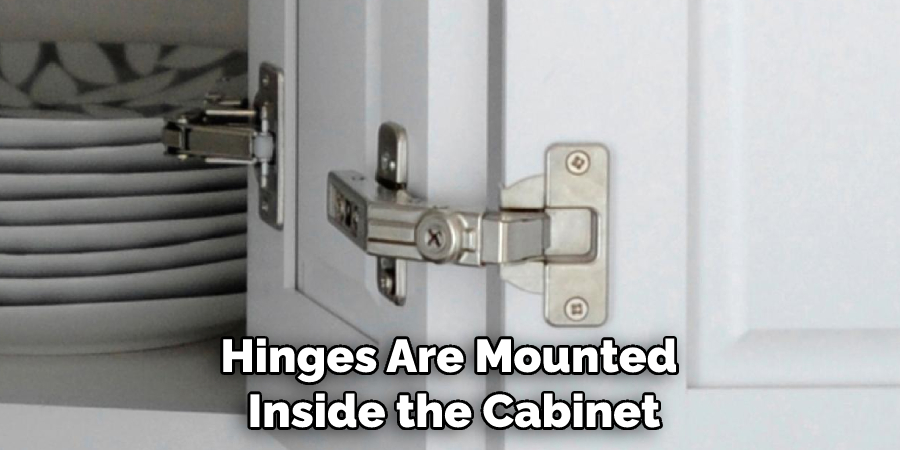
Step-by-Step Processes for How to Prevent Cabinet Door From Hitting Wall
Step 1: Inspect the Cabinet Door
Start by inspecting the cabinet door and determine if it is hitting the wall due to being misaligned. If this is the case, you’ll need to adjust the hinges or other hardware responsible for attaching the door to its frame. Adjusting the hinges will usually require removing them from their current fixed position. After this is done, loosen the screws and use a level to ensure that both hinges are adjusted similarly. Once the door is level, tighten the screws and check to ensure that the cabinet door stops hitting the wall.
Step 2: Install Cabinet Door Stops
If adjusting the hinges doesn’t solve the problem, you can install cabinet door stops as an effective way to prevent your cabinet doors from hitting against walls. These are easy to install and come in various styles to match the design of your cabinet doors. Most door stops have an adhesive back that can be easily attached to both the cabinet door and wall. Be sure to measure twice before applying the adhesive to know where exactly it should go. This will ensure that the stop is placed in the right location and that it does its job properly.
Step 3: Adjust the Cabinet Doors
You can also adjust the actual cabinet doors to ensure they don’t come in contact with walls. For this, you’ll need to use a screwdriver and loosen the screws that attach the door to the frame of your cabinets. After doing this, make sure to test the door and check if it is hitting anything. If it does, make slight adjustments until it stops. When you are done, tighten the screws back up.
Following these steps will help you prevent your cabinet doors from hitting walls and causing damage to both your cabinet and wall surfaces.
Precautions for How to Prevent Cabinet Door From Hitting Wall
- Ensure to properly measure the cabinet doors before installing them so that they do not protrude too far out and hit the wall when opened.
- Install a door stop or rubber tip at the edge of each cabinet door to ensure it does not swing open too hard and cause damage to the wall.
- Ensure that the hinges used for mounting the cabinet door are of the correct size and strength to hold it in place.
- Adjust the screws at the hinge, if necessary, so that the door is not too loose or tight, which can also cause damage when opened.
- Install a soft-closing mechanism if available, as this will help to prevent the door from slamming shut and potentially damaging the wall.
- Use a cabinet handle or knob when opening the door so that you can control how much pressure is applied while opening it to avoid any damage to the wall.
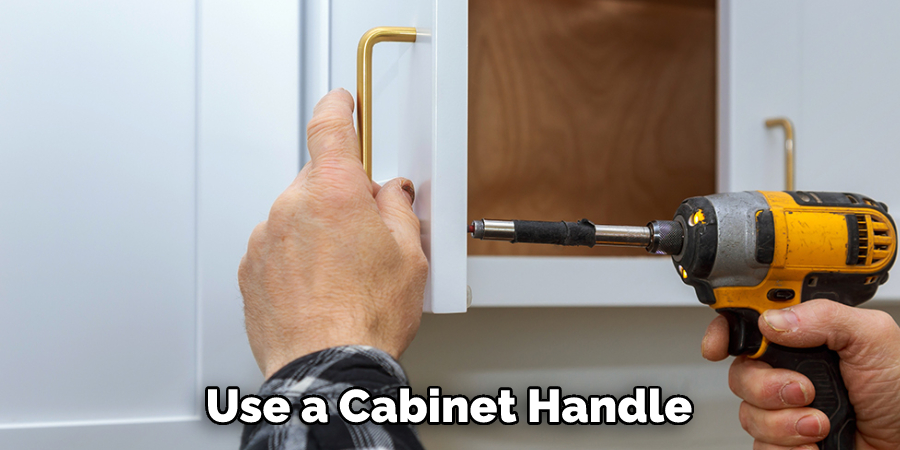
By following these simple tips and taking the necessary precautions, you can prevent any damage to your walls caused by your cabinet doors.
How Can You Adjust the Hinges to Ensure Maximum Clearance?
If the current hinges on your cabinet are not allowing enough space to prevent the door from hitting the wall, you can adjust them. Start by opening the door fully and then check how much clearance you need between the edge of the door and the wall. Once you have determined this measurement, it’s time to adjust your hinges. Start by loosening the screws on the hinge and then carefully pull it away from the door. You may need to use a screwdriver or other tool to do this properly. Now, you can move the hinge plate closer to your wall until it has created an appropriate amount of clearance between it and the edge of your door.
When you have achieved the desired clearance, simply tighten the screws of the hinge back in place and test your cabinet door. You may need to adjust multiple hinges to achieve a uniform clearance between all the doors. Adjusting your hinges ensures that your cabinet door won’t hit the wall when it is opened or closed. This will make it easier to access your cabinet and protect the wall from any potential damage.
How Can You Prevent Your Cabinet Door From Hitting a Corner of the Wall?
- Measure the distance between your cabinet door and the wall. You’ll need to know this measurement when you purchase door bumpers or spacers.
- Choose a set of bumper pads that will fit in this space. Self-adhesive rubber bumpers are available at most hardware stores and come in different shapes and sizes, so you should be able to find one that fits your cabinet door.
- Place the bumper pads on the wall, ensuring they align with the hinges on your cabinet door.
- Secure them firmly by pressing them and allowing time for the adhesive to dry properly.
- Close your cabinet door and test the fit. If you need to adjust it, add or remove bumper pads as necessary.
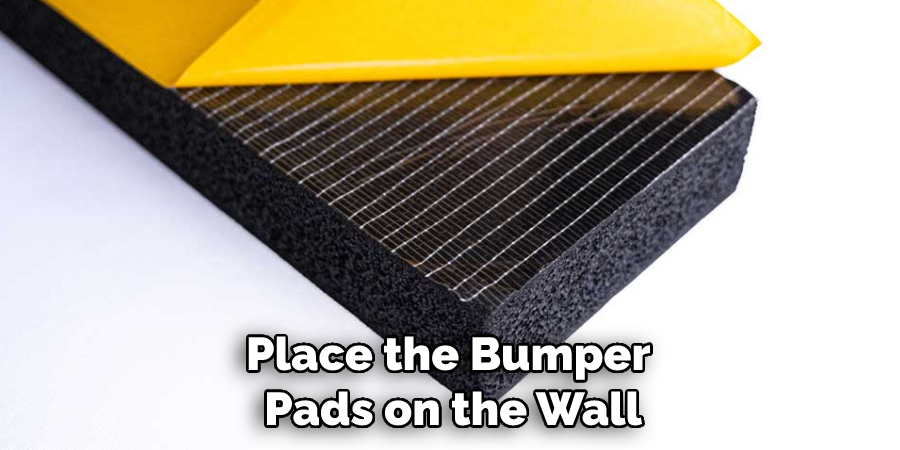
By following these steps, you can prevent your cabinet door from hitting the wall and avoid damage to both the door and the wall. Doing this will also help reduce noise when opening or closing your cabinets.
How Often Should You Check the Hinges to Ensure They Are Still Providing Adequate Clearance?
- Regularly check the hinges of your cabinet doors to ensure they are not becoming loose or damaged and that there is enough clearance for them to move freely without hitting the wall.
- Inspect the hinges around once a month to ensure they provide adequate clearance and that the screws remain firmly in place.
- If there is any visible damage to the hinges or the screws have become loose, take the necessary steps to repair them.
- Consider factors such as humidity, temperature changes, and door usage when assessing how often you should check the hinges.
- Make sure to regularly clean and lubricate your cabinet door hinges with a specialized lubricant to ensure that they remain in good condition.
- Monitor the clearance between your cabinet door and the wall as you open and close it. If it appears to be reducing, make sure to adjust the screws or hinges accordingly.
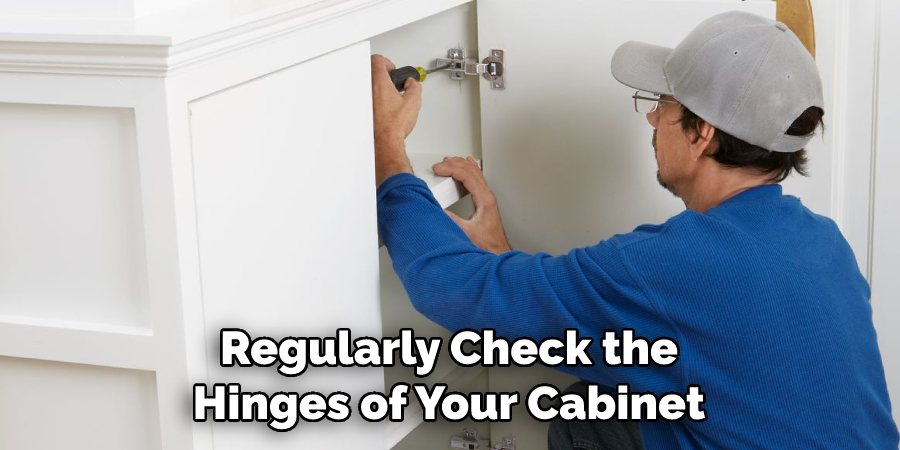
Following these steps regularly should help you prevent your cabinet doors from hitting the wall by ensuring that the hinges remain in good condition and provide adequate clearance.
Conclusion
In conclusion, a few simple steps can prevent cabinet doors from hitting walls. Adjusting the hinges, adding door buffers and stops, and using magnetic catches are easy ways to ensure your cabinet doors stay in place and don’t cause damage to your walls. With some patience and the right tools, you can easily keep your cabinets from knocking against the wall and causing costly damage. With these simple tips, you can ensure that your cabinets will stay in good condition for years to come and keep your walls looking great. I hope reading this post has helped you learn how to prevent cabinet door from hitting wall. Make sure the safety precautions are carried out in the order listed.
You Can Check It Out to Find Matching Cabinets

